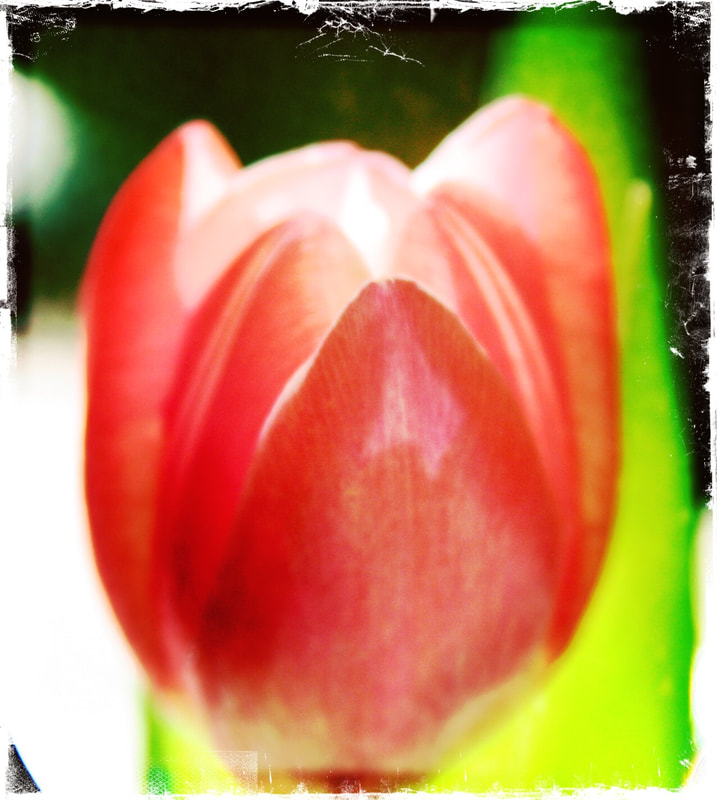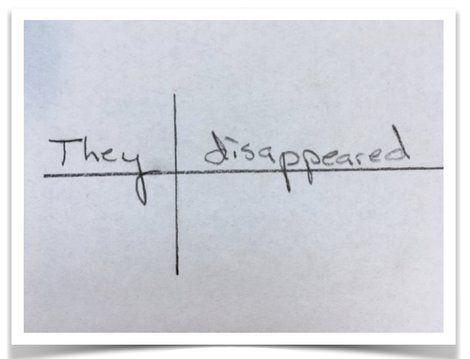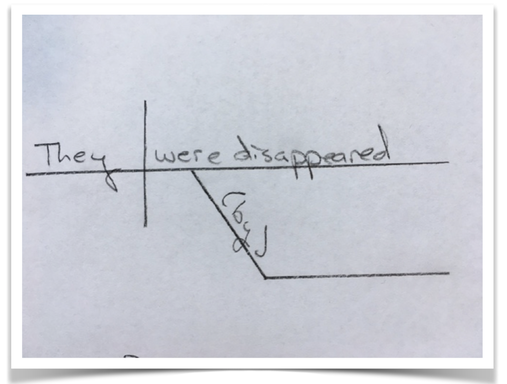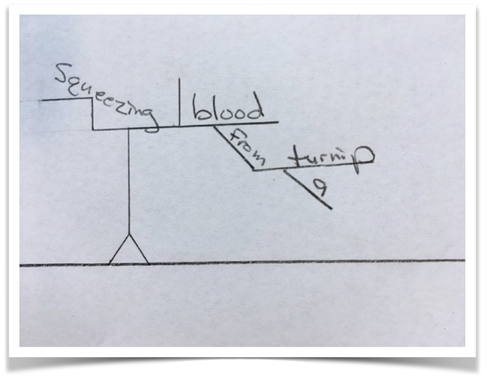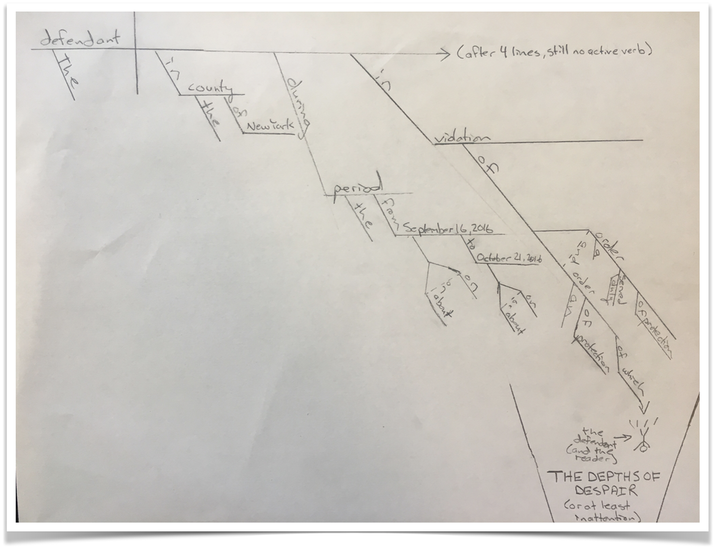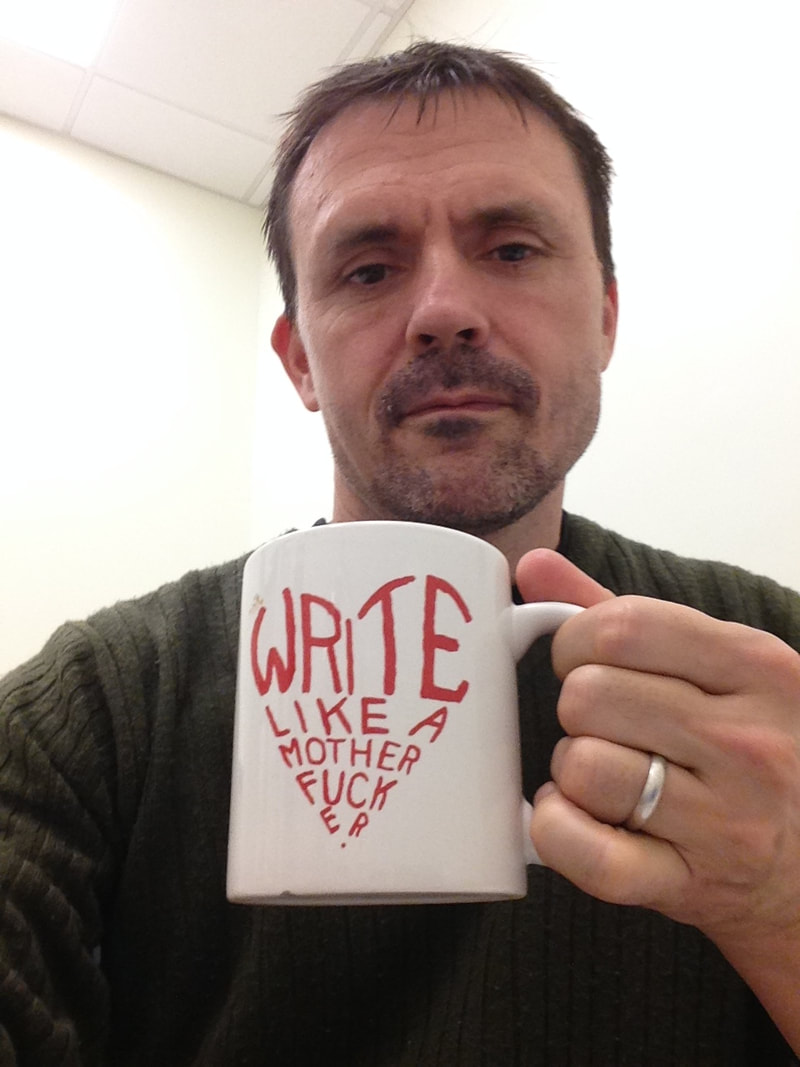ASSAY: A JOURNAL OF NONFICTION STUDIES
5.1
5.1
|
“If there were no speaking or writing, there would be no truth about anything. There would only be what is.”
Susan Sontag, The Benefactor Coming from a family of electricians and mechanics, parsing the grammar of sentences has always given me a joy similar to taking apart an engine or figuring circuitry. But whereas an engine or a circuit, much like those math and stodgy grammar arguments, generally works reductively—much of a mechanic’s or electrician’s job is problem-solving to find the one part that causes the whole not to work—a sentence is inductive, each of its parts working together to create meaning, truth even, out of mere words. The more complicated the sentence, the more multitudinous the possible meanings. Parsing and diagramming written language can feel counterintuitive, imposing a rigid metric onto a system of communication that developed organically without it.
One of my favorite things about written language is the tension between 1) the expansive complexity of thought and 2) the almost math-like simplicity (which isn’t simple at all) of written English. The between-the-lines arguments between these two things are the kind of arguments I find fun to have—much more fun than reductive arguments like “2+2=4” or “the distance of a straight line between a and b” or “i before e except after c.” As the written word is superseded by sound and the visual image as our primary expressive medium, fewer and fewer young people are taught basic grammatical concepts as part of the discipline and practice of writing. Part of me doesn’t mind this—it’s much more fun to talk about what makes a sentence beautiful than what makes it functional—but it’s becoming harder and harder to look at the tension between expansiveness and structure looking from only one side of the chasm. One way to bridge this gulf that was popular throughout 19th and 20th centuries is sentence diagramming. I might have been part of the last generation to have been taught this circuital method of breaking down written English. I wish it was still cool to teach it to my writers. One of our adjuncts who teaches first-year writing and has a background in ESL spends a lot of time parsing out grammatical issues with students, which tends to include diagramming sentences. Our tutors who work with his students go on and on about what a nerdy thing this is to do. I hold my tongue, mostly. I think the argument could be made that sentence diagramming is merely a form or extension of Euro-centric imperialism, attempting to blast through the contours and abnormalities of the English language in ways similar to what colonizers of the Americas and the industrialists who followed them have done (still do) to our physical landscape. Language, especially written language, occupies a liminal space between the natural and the synthetic. Linguistic communication is perhaps the most human of our animal instincts, allowing us a third option to the fight-or-flight dialectic: cooperative, symbiotic understanding. Language is also the primary paradigm governing the structural understanding of ourselves, and as such is perhaps the most powerful tool not just of academic disciplines, historical narratives, and generational tradition, but also of repressive governments, rapacious industrialists and capitalists, and dusty schoolmarms and mansplainers. To Control the Message is to dictate how to use our common language: to put it in a box, to diagram its meaning as if any word or sentence or thought had only one meaning, as if any person or institution had the right to impose that meaning on the rest of our shared world. I nod in agreement listening to all of these arguments, ingest them, and reproduce them here in summary form. But. At the root of the exercise—nay, the art—of sentence diagramming, or of my exercise of it at least, is an attempt at enacting the power of language to enable understanding. If we make language to make meaning, we deconstruct language to discern meaning. __________
I’ll first look at Joan Didion, whose sentences are both replete with meaning and imminently diagrammable. While on assignment in 1982 in El Salvador, a crux of repressive government (theirs) and rapacious capitalists (ours) that fueled a rapid descent from “the slender reed” of democracy into a state government that raped, tortured, and systematically disappeared its own people, Didion made an observation about the U.S.-trained and bankrolled Salvadoran leadership and military, specifically “the tactic of solving a problem by changing its name”:
This renaming was referred to as a “reorganization,” which is one of many words in El Salvador that tend to signal the presence of the ineffable. One example of this linguistic obscenity is a subtle transubstantiation of the term “disappear” which might have caught the eye of an astute reader in reading my sentence preceding the Didion quote. Anyone familiar with the recent history of U.S./South American relations and/or the politics of terror will probably be familiar with the insidious play on words, but a little rudimentary diagramming of a few short sentences can hopefully illustrate the process by which a word can be made ineffable.
In Spanish, the term “disappear” can be either the transitive or intransitive; not so with English, which in common usage only uses the intransitive: Even this traditional usage is vaguely, figuratively haunting; we burn out, we fade away, but none of us just disappear. At least not of our own volition. What, then, possesses the sheer force to make disappear transitive, with us as its object? George Orwell posits this in 1984:
People simply disappeared, always during the night. Your name was removed from the registers, every record of everything you had ever done was wiped out, your one-time existence was denied and then forgotten. You were abolished, annihilated: vaporized was the usual word. Pinochet in Chile, Argentina’s Dirty War, El Salvador’s U.S.-backed military: all used the terror implicit in the transitive, subject-free disappear.
The blank space protruding from the unspoken “by” is The Ineffable, The Unspoken. Perhaps the central premise of critical thought is that anything that can be explained, should be. One might fill in that blank in a number of ways—unregulated collusion between global capitalism and repressive governments, for example—but that doesn’t inspire the terror that absolutely subjugates and immobilizes entire populations. Only that blank space after that transitive “disappear” can do that.
_________
While the substance is dramatic, the diagramming I’ve done is about as simple as sentence diagramming gets. A contemporary challenge confronting word nerds today, the challenge of imposing meaning on language that is intentionally unmeaningful, is unfortunately a daily one: diagramming the sentences of Donald Trump. Honestly, this is beyond the scope of my skillset, but I get a perverse schematic pleasure seeing people quixotically attempt to make sense out of words that were obviously strung together without thought to meaning (perhaps the most perfectly attuned satire I’ve yet read was when McSweeney’s transcribed his speech in 2017 at a breakfast for Black History Month word for word and correctly called it parody).
Perhaps the great irony of implicit in Trump’s indifference to the power of words is this: He hearkens continually back to a purer, simpler time (which ironically is frequently the years of Reagan, whose administration was complicit in assisting military dictatorships in Latin America and Iran), but seeing diagrams of his sentences gives me pause to hearken back as well to a simpler time, when sentences made sense, when language carried meaning rather than deliberately obfuscating it. But I’m willing to admit that, like Trump’s Old, Great America, perhaps that time is a creation of my own fancy, a way of enforcing or extracting meaning, my own method of This is a dark turn from the urge toward meaning in words. What Didion was critiquing in Salvador and what I’m critiquing in Trump is a cynical usage of language to obscure meaning rather than elucidate it. It’s like taking the circuit—this beautiful, mysterious functioning of physical things to conduct this mysterious, unseeable thing we call electricity—and saying, “Actually, there is no circuit, there is no meaning. Only these pieces.”
But what of language whose obfuscation lies in its impenetrable, tyrannical correctness? Something that one hears frequently from the lips of Trump voters, Keep It Simple Stupid (or the KISS method as my grandfather, who never listened to late-Seventies glam rock, said), is in many ways a direct rebuke of the impenetrable cipherization of seemingly everything, from legal, political, and educational institutions to personal matters like gender identification, spirituality, and yes, language itself. Through this lens, it’s possible to see support for his vacuous promises and attacks as a big middle finger to the endless structures we’ve built up around ourselves that are so complex that we can no longer recognize them. One of many ironies to this thinking, though, is the caveat that most Trump voters are not systemically oppressed by the incomprehensible linguistics of modern law like Salvadorans in the late Seventies and early Eighties or, to cite the most obvious examples from our own shores, recent immigrants and low-income minorities. In Discipline & Punish: The Birth of the Prison, Michel Foucault frames modern incarceration, more than anything, as a state of constant surveillance coupled with a strict disciplinary division of humanity. To be delinquent is to commit an act that is construed, without moral judgment, to be caught doing something outside the bounds of law (which is, most importantly, to violate the disciplinary lines of property). To discipline, then, is not necessarily to punish, but rather to isolate, to spy, and to gather disciplinary language to function as evidence: “Delinquency, solidified by a penal system centred upon the prison, thus represents a diversion of illegality for the illicit circuits of profit and power of the dominant class” (280). The linguistic circuit at this point becomes the oppressor, the system. Systems, after all, are what license oppression, giving authority to individuals who wouldn’t otherwise have the power to separate families, drug children, promote police brutality, or systemically incarcerate entire racial and economic classes. This is both the power and the failure of language: “the language of the law, which is supposed to be universal, is, in this respect, inadequate; it must, if it is to be effective, be the discourse of one class to another, which have neither the same ideas nor even the same words.” A lot of this has sprung out of my conversations with inmates with whom I work in a self-advocacy workshop at Rikers Island. Many of them see language in its most combative terms: Legal documents, procedures, and even letters from their own lawyers are written in words they (and many times even I) don’t understand, seemingly written intentionally to obscure meaning. Even if they’re perfectly constructed and diagrammable, they are written not to open doors of meaning and understanding but to close them. Here’s one illustration, from the case history of an inmate who has been detained for 20 months without a trial for violating a mutual restraining order: The defendant, in the County of New York, during the period from on or about September 16, 2016 to on or about October 21, 2016, in violation of a duly served order of protection and an order of protection of which the defendant had actual knowledge because he was present in court when such order was issued and such order of protection issued by a court of competent jurisdiction in this and another state, territorial and tribal jurisdiction, intentionally placed and attempted to place another person, for whose protection the order was issued, in reasonable fear of physical injury, serious physical injury and death by repeatedly following that person and engaging in a course of conduct and repeatedly committing acts over a period of time. Reading passages like this always reminds me of that episode of Seinfeld where Jerry’s dentist keeps telling bad Jewish jokes. When someone asks him if this offends him as a Jewish person, he says, “No, it offends me as a comedian!” There is just so much to be offended by as a writer in this passage. After “The Defendant” the first four lines are composed entirely of prepositional phrases, plunging the defender and the reader into depths of despair (or at least inattention) before getting to the active verb, incidentally the crime of which the man is accused, which begins with the last word of the seventh line. (Incidentally, the above sentence is describing a situation in which two people took out joint orders of protection against each other after a bad breakup, and one of them reported the other after they saw each other at the accused’s place of work.)
But the temptation to make fun of the writing obscures the twofold intention of this and other such legalistic paragraphs: 1) to give information but not context, and 2) to instill the kind of fear that breeds complicity. This method of using language is perhaps more subtle than the transitive “disappear,” but its ends are similar: language as tool of oppression.
Many of the incarcerated people I work with mistakenly try to appropriate this language in conversing with judges and lawyers, not knowing that the language itself—the language of obfuscation and opacity—is not a tool of argument; it’s a tool for preventing argument, incarcerating language, negating meaning, stamping out hope, forcing complicity. |
|
John Proctor lives in Brooklyn, New York with his wife, two daughters, and Chihuahua. His work has been published in Atlas & Alice, The Weeklings, Essay Daily, The Normal School, DIAGRAM, Superstition Review, McSweeney’s, and the international microfiction anthology Minificción y nanofilología: Latitudes de la hiperbrevedad [Iberoamericana], and is forthcoming in the anthology Beyond Pain [Routledge]. His essay “The Question of Influence” was a Notable selection in The Best American Essays 2015, and his essay “The A-Rod of Ballhawking” was nominated for a 2016 Pushcart. He teaches academic writing, media studies, and communication theory at Manhattanville College, and runs a weekly writing workshop for inmates at Rikers Island. You can find him online at NotThatJohnProctor.com/.
|
